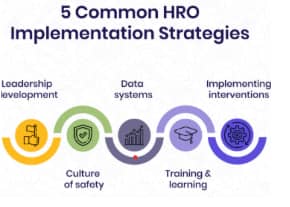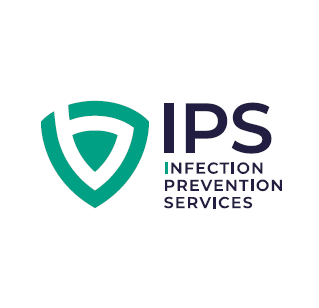What Can We Learn From Them?
This blog highlights the 'know-do' gap in aged care infection prevention and control (IPC), where knowledge often fails to translate into action, resulting in suboptimal care. To close this gap, we can learn from High-Reliability Organisations (HROs), such as those in aviation and manufacturing, which prioritise safety through principles like a preoccupation with failure and deference to expertise. We also discuss practical tools, such as checklists, for standardising procedures and communication protocols, like SBAR, and demonstrate their effectiveness in other high-risk settings. Ultimately, we aim to promote a holistic, integrated approach that combines HRO principles with these practical tools to foster a strong safety culture and continuously enhance IPC in aged care.

Introduction
In the vital world of aged care, where our most vulnerable live, a subtle yet widespread challenge frequently undermines even the best intentions: the "know-do" gap. This isn't just a memorable phrase; it's the profound disconnect between what healthcare professionals know should be done and what is carried out in practice. For Infection Prevention and Control (IPC) in aged care, this gap isn't just an inconvenience; it can have serious consequences, leading to longer illnesses and higher mortality rates for residents.
Imagine a situation where 72% of practitioners know to offer Oral Rehydration Salts (ORS) for childhood diarrhoea, but only 17% do so in practice. Even more concerning, the use of potentially harmful treatments without ORS increased from 21% in stated knowledge to 72% in actual clinical practice. This striking example, from a study in rural Bihar, India, clearly demonstrates that the "know-do" gap extends beyond a lack of knowledge or training. If it were simply a matter of understanding, educational measures would resolve the issue. Instead, deeper systemic barriers are at play, such as environmental pressures, cognitive overload, inefficient workflows, or cultural norms. Tackling this effectively in aged care IPC means moving the focus from individual faults to a thorough examination and addressing of these operational and systemic issues.
So, how do we transform knowledge into consistent action and elevate safety in aged care IPC? The answer lies in drawing insights from High-Reliability Organisations (HROs) and adopting powerful, proven tools.
So, how do we transform knowledge into consistent action and elevate safety in aged care IPC? The answer lies in drawing insights from High-Reliability Organisations (HROs) and adopting powerful, proven tools.

The Mindset Shift: Learning from High-Reliability Organisations
HROs originated in high-stakes settings such as naval aviation and nuclear power, where failure can have catastrophic consequences. These organisations have maintained exceptional safety, employee satisfaction, and efficiency over extended periods by actively preventing accidents. Inherently high-risk healthcare can benefit significantly from implementing HRO principles, as many medical errors result from complex interactions within systems rather than solely from individual mistakes.
HROs operate with a unique mindset, promoting a widespread organisational culture that constantly improves safety. This isn't just a static list of rules, but a dynamic and reinforced way of thinking. The five core characteristics of HROs are:
HROs operate with a unique mindset, promoting a widespread organisational culture that constantly improves safety. This isn't just a static list of rules, but a dynamic and reinforced way of thinking. The five core characteristics of HROs are:
- Preoccupation with Failure: This principle means constant vigilance for potential failures, ensuring that the absence of errors does not lead to complacency. Near-misses are never ignored; they are meticulously examined as vital indicators for improving safety. In aged care IPC, this translates to proactively identifying infection risks and learning from every minor breach.
- Reluctance to Simplify Interpretations: Recognising the inherent complexity of providing care, this principle demands deep investigation into the root causes of failures, moving beyond superficial explanations like "human error". For IPC, this means examining systemic factors, such as workflow, staffing, or equipment issues, that contribute to breaches in infection control.
- Sensitivity to Operations: This trait recognises that a person's work is deeply embedded within broader operational conditions that significantly influence safety. Workers are highly aware of systems and processes for safe care and remain vigilant in identifying risks. This promotes staff awareness in aged care of IPC protocols and understanding how factors such as workload affect compliance.
- Commitment to Resilience: This cultivates a mindset of rapid situation assessment to promptly identify and respond effectively to safety threats before they escalate and cause harm. It involves practising rapid responses to unpredictable system failures. For IPC, this includes developing robust outbreak response plans and adapting swiftly to new guidelines.
- Deference to Expertise: This principle values the understanding of processes held by frontline workers, recognising that the most relevant expertise may reside with the person closest to the safety threat, regardless of their formal position. It encourages listening to and respecting staff at all levels. In aged care, this empowers frontline staff, such as nurses and care teams, to voice IPC concerns and share their practical knowledge in any situation.
A one-unit increase in high reliability principles has been linked to 25% fewer medication errors and 37% fewer patient falls. The US Veterans Health Administration has effectively reduced patient misidentification errors by implementing human-centred design (HRO)- based strategies.
Crucially, HRO principles directly address the "know-do" gap. "Preoccupation with failure" refers to staff actively seeking discrepancies between ideal and actual practice. "Sensitivity to operations" helps them understand the contextual factors that can hinder proper actions. "Deference to expertise" empowers frontline staff to explain why knowledge isn't being applied. HRO principles, therefore, establish the cultural and structural foundation to systematically identify, analyse, and address these gaps. Care staff may defer to the perceived greater expertise of higher-ranking staff within the facility's hierarchy. This can lead to two outcomes: either the HCW ignores or delegates the task, or the higher-ranked staff member gains a boost, which increases the divide, raising the esteem of the superior staff and deepening the divide. This shifts the focus from individual accountability to collective responsibility.
Tools for Safety: The Power of Checklists
Beyond just a mindset, practical tools are crucial. Checklists have proven vital in enhancing safety and consistency across high-risk industries, offering a tangible method to bridge the "know-do" gap.
Their origin dates to 1934, when a Boeing aircraft crashed due to "pilot error" – specifically, the pilot forgetting to release a lock. Pilots realised the aircraft's complexity was beyond human memory, leading to the creation of essential checklists. The result? 12 aircraft flew 1.8 million miles without a serious mishap, showcasing the power of checklists in standardising procedures. Today, aviation checklists are vital, seamlessly integrated into pilots' workflows as cognitive aids, reducing reliance on memory and allowing pilots to focus on more critical tasks.
In manufacturing, Standard Operating Procedure (SOP) checklists are "game-changers," ensuring tasks are performed correctly every time for quality control and error reduction. A leading automobile manufacturer, for instance, significantly reduced errors and rework, increased productivity by 20%, and improved product quality by standardising assembly line procedures with SOPs. The military also relies on procedural checklists as indispensable decision aids in complex Command and Control (C2) operations, managing extensive technical knowledge.
Their origin dates to 1934, when a Boeing aircraft crashed due to "pilot error" – specifically, the pilot forgetting to release a lock. Pilots realised the aircraft's complexity was beyond human memory, leading to the creation of essential checklists. The result? 12 aircraft flew 1.8 million miles without a serious mishap, showcasing the power of checklists in standardising procedures. Today, aviation checklists are vital, seamlessly integrated into pilots' workflows as cognitive aids, reducing reliance on memory and allowing pilots to focus on more critical tasks.
In manufacturing, Standard Operating Procedure (SOP) checklists are "game-changers," ensuring tasks are performed correctly every time for quality control and error reduction. A leading automobile manufacturer, for instance, significantly reduced errors and rework, increased productivity by 20%, and improved product quality by standardising assembly line procedures with SOPs. The military also relies on procedural checklists as indispensable decision aids in complex Command and Control (C2) operations, managing extensive technical knowledge.

Applying checklists to aged care IPC has significant potential to standardise procedures and significantly reduce missed steps or errors, directly addressing the "know-do" gap by translating theoretical knowledge into consistent practice. However, lessons from the healthcare industry's experience are crucial. While the WHO Surgical Safety Checklist initially showed notable improvements, later studies revealed mixed
outcomes due to challenges with workflow integration (often seen as an extra burden, unlike aviation), inconsistent compliance, and the complexities involved in cultural and infection control factors. The conflicting results were partly due to multiple simultaneous interventions, which made it unclear what specific role the checklist played in the outcome.
These challenges highlight that simply having a checklist alone is not enough; design, integration into daily workflow, and organisational culture are crucial. For aged care IPC, a "copy-paste" approach is unlikely to succeed. Instead, focus on:
These challenges highlight that simply having a checklist alone is not enough; design, integration into daily workflow, and organisational culture are crucial. For aged care IPC, a "copy-paste" approach is unlikely to succeed. Instead, focus on:
- Design for Workflow Integration: Checklists should fit smoothly into daily routines (e.g., during admissions, wound care, cleaning).
- Clarity and Simplicity: Use clear, concise language, simplify complex tasks, and include visuals.
- Training and Culture: Educate on why checklists are vital for safety, promoting a blame-free environment where they are regarded as tools for ongoing learning, not merely compliance.
- Adaptability: Understand that complex situations (such as novel pathogen outbreaks) might need more flexible tools like structured briefings or decision trees alongside linear checklists.
- Feedback and Iteration: Regularly review effectiveness, gather frontline feedback, and revise iteratively, aiming to improve with each review.
- Logging Details: Include fields for essential data to support quality control and trend analysis.

Speaking Safety: The Impact of Standardised Communication
Effective communication is a vital foundation of safety in high-risk environments, ensuring essential information is conveyed clearly and without ambiguity.
Aviation relies on standardised phraseology and rigorous read-back/hear-back procedures as the "backbone of safe and efficient flight operations." This helps prevent misunderstandings that could cause catastrophic accidents, builds trust, and fosters shared mental models among team members. Similarly, military Command and Control (C2) frameworks heavily depend on structured communication to delegate authority and ensure shared awareness and trust, thereby enabling disciplined initiative in complex environments.
In healthcare, a widely used and effective standardised communication tool is SBAR (Situation-Background-Assessment-Recommendation). It's a straightforward framework for critical conversations among healthcare team members regarding a patient's condition. SBAR is adaptable for use with aged care residents as well as in hospital settings.
Aviation relies on standardised phraseology and rigorous read-back/hear-back procedures as the "backbone of safe and efficient flight operations." This helps prevent misunderstandings that could cause catastrophic accidents, builds trust, and fosters shared mental models among team members. Similarly, military Command and Control (C2) frameworks heavily depend on structured communication to delegate authority and ensure shared awareness and trust, thereby enabling disciplined initiative in complex environments.
In healthcare, a widely used and effective standardised communication tool is SBAR (Situation-Background-Assessment-Recommendation). It's a straightforward framework for critical conversations among healthcare team members regarding a patient's condition. SBAR is adaptable for use with aged care residents as well as in hospital settings.
- S = Situation: A brief statement of the problem (e.g., "Resident X has a sudden onset of fever and cough").
- B = Background: Relevant and concise information about the situation (e.g., "Resident X is 85, has COPD, and was admitted last week. No known exposures.").
- A = Assessment: Analysis and consideration of options, including what the clinician has found or believes (e.g., "I suspect a respiratory infection, possibly pneumonia. Vital signs are...").
- R = Recommendation: Action requested or recommended (e.g., "I recommend a chest X-ray, sputum culture, and starting broad-spectrum antibiotics.").
SBAR has been shown to improve clarity and completeness in communication, reduce adverse events, significantly reduce medication errors, and improve patient safety. It also positively influences staff satisfaction by providing a clear framework and decreasing cognitive load.
For aged care IPC, implementing standardised communication methods:
- Implement SBAR for Critical IPC Communications: Train all staff on SBAR for communicating changes in resident condition related to infection, reporting suspected outbreaks, and escalating concerns.
- Standardise Handover Reports: Require a consistent format for shift handovers and resident transfers to communicate crucial IPC information reliably.
- Clear Language and Avoid Jargon: Actively encourage concise, unambiguous language, avoiding technical jargon when communicating with staff, families, or external providers.
- Read-Back/Hear-Back Procedures: Make it compulsory to perform read-back/hear-back for crucial IPC instructions, such as new medication orders or changes in isolation.
- Foster a Culture of Open Communication: Create an environment where staff teams feel confident to speak up, ask questions for clarification, and report concerns or near-misses without fear of reprisal, reflecting aviation's safety culture and aligning with "deference to expertise".

Integrating for Excellence: A Holistic Approach
Closing the "know-do" gap in aged care needs more than isolated efforts; it requires a comprehensive, systemic approach that combines core HRO principles with practical, proven tools.
The HRO mindset offers the fundamental cultural foundation for IPC, encouraging ongoing learning and proactive risk detection. When carefully designed and smoothly incorporated, checklists become valuable operational tools, functioning as cognitive aids and guaranteeing compliance with vital procedures. Standardised communication tools like SBAR deliver the structured, unambiguous language needed for clear, efficient, and precise information sharing among multidisciplinary teams.
The issues with healthcare checklists, such as inconsistent benefits and the perceived increase in workload, clearly demonstrate that having a tool alone isn't enough if the organisational culture isn't supportive or if the tool isn't well integrated. Conversely, a strong safety culture, as outlined by HRO principles, requires concrete, actionable tools to turn its values into practical steps and measurable results. This creates a dynamic, mutually reinforcing relationship: culture supports effective tool use, and effective tool use, in turn, strengthens the safety culture.
For aged care IPC, true excellence and sustained improvement arise from a collaborative approach. This includes actively promoting HRO principles through committed leadership and empowered staff, while underpinning these principles with thoughtful design and the consistent, integrated application of tools like IPC checklists and SBAR. This creates a strong feedback loop that effectively narrows the "know-do" gap.
The HRO mindset offers the fundamental cultural foundation for IPC, encouraging ongoing learning and proactive risk detection. When carefully designed and smoothly incorporated, checklists become valuable operational tools, functioning as cognitive aids and guaranteeing compliance with vital procedures. Standardised communication tools like SBAR deliver the structured, unambiguous language needed for clear, efficient, and precise information sharing among multidisciplinary teams.
The issues with healthcare checklists, such as inconsistent benefits and the perceived increase in workload, clearly demonstrate that having a tool alone isn't enough if the organisational culture isn't supportive or if the tool isn't well integrated. Conversely, a strong safety culture, as outlined by HRO principles, requires concrete, actionable tools to turn its values into practical steps and measurable results. This creates a dynamic, mutually reinforcing relationship: culture supports effective tool use, and effective tool use, in turn, strengthens the safety culture.
For aged care IPC, true excellence and sustained improvement arise from a collaborative approach. This includes actively promoting HRO principles through committed leadership and empowered staff, while underpinning these principles with thoughtful design and the consistent, integrated application of tools like IPC checklists and SBAR. This creates a strong feedback loop that effectively narrows the "know-do" gap.
Recommendations for developing a strong safety culture in aged care include:
- Leadership Commitment and Visibility: Executive leadership must visibly prioritise IPC safety, allocate resources, and engage in safety discussions.
- Open and Blame-Free Reporting Systems: Establish confidential channels for IPC concerns and near-misses, treating reports as valuable learning opportunities, not failures.
- Continuous Training and Education: Deliver ongoing, practical training that reinforces IPC protocols and provides hands-on experience with tools.
- Interdisciplinary Teamwork and Empowerment: Create environments where all staff feel confident to speak up, ask questions, and share their expertise in IPC discussions.
- Data-Driven Improvement and Feedback Loops: Establish strong systems for collecting and analysing IPC performance data to spot trends, identify areas for improvement, and offer constructive feedback.
- Regular Practice and Drills: Conduct realistic drills for common IPC scenarios to build muscle memory and reinforce tool use under pressure.
Your Path to a Safer Future in Aged Care: Conclusion
The "know-do" gap remains a persistent challenge, but a clear plan exists for improving safety and closing this gap in aged care. By embedding HRO principles into your organisational culture, using practical and well-integrated tools like checklists, and encouraging open, blame-free communication through standardised protocols like SBAR, you can enhance your IPC strategies. This isn't a one-off project but a continuous commitment to ongoing improvement, learning from every near-miss and every success.
Ready to enhance aged care safety? Explore the core principles of High-Reliability Organisations, the craft of checklist design, and the significance of standardised communication. Your dedication can achieve the highest levels of safety and quality of care for our most vulnerable population.
Explore our blogs, available on the HUB.
Take advantage of our expertise in IPC. See the HUB for policies, resources and courses relating to this very important subject. Ask EVE for a quick answer to your question.
Follow us, Infection Prevention Services (IPS), on Facebook and LinkedIn. Like and Share.
Take advantage of our expertise in IPC. See the HUB for policies, resources and courses relating to this very important subject. Ask EVE for a quick answer to your question.
Follow us, Infection Prevention Services (IPS), on Facebook and LinkedIn. Like and Share.

